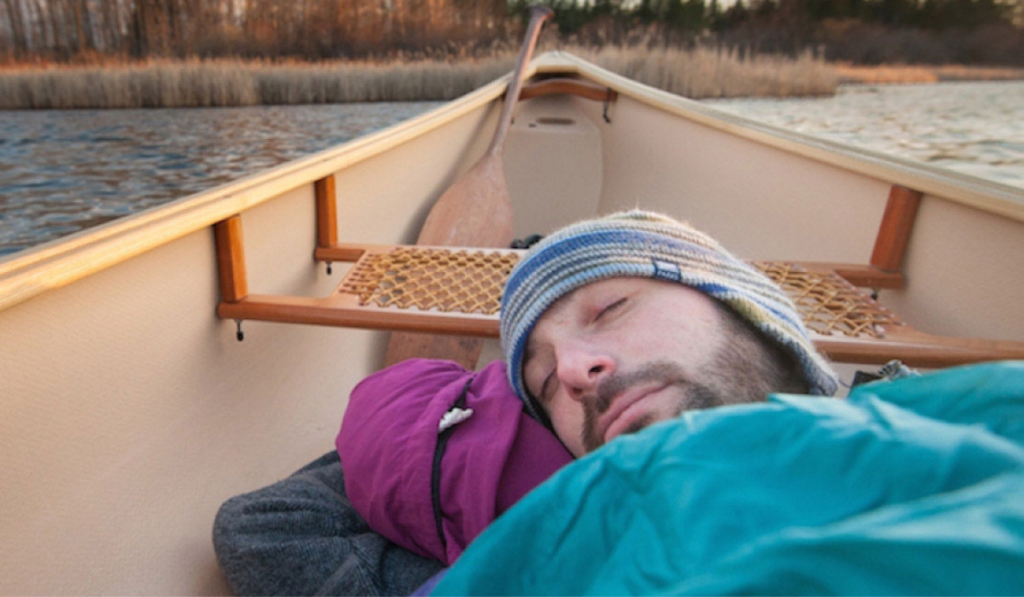Written by Jerry Jacoby in Canoe Last Updated August 27, 2023
There is no definitive answer to this question as it depends on a variety of factors, including the weather conditions, the type of canoe, and the experience of the person sleeping in it. That said, sleeping in a canoe can be safe if the proper precautions are taken and you are comfortable with the risks involved.
There’s something about sleeping in a canoe that just feels right. Maybe it’s the fact that you’re surrounded by water, or maybe it’s the gentle rocking motion that lulls you to sleep. Whatever the reason, there’s no denying that sleeping in a canoe can be an incredibly peaceful experience.
But is it safe? The short answer is yes, it is perfectly safe to sleep in a canoe. In fact, many people choose to camp out in their canoe when they go on extended paddling trips.
As long as you take some basic safety precautions, such as tying your canoe to a tree or another secure object, you’ll be just fine. Of course, there are always risks involved whenever you’re camping outdoors. But as long as you use common sense and take some simple safety measures, sleeping in a canoe can be a truly wonderful experience.
Kayak With Sleeping Compartment
Kayaking is a great way to get out and explore nature, but if you’re looking for an overnight option, you might want to consider a kayak with a sleeping compartment. These kayaks typically have a large cockpit area that can be used for sleeping, as well as plenty of storage space for gear. Some even come equipped with a small kitchen area.
Here’s what you need to know about kayaking with a sleeping compartment. First, it’s important to choose the right kayak. You’ll want one that’s stable and comfortable, with enough room for you and your gear.
Look for a model with ample storage space and good reviews from other campers. Once you’ve got your kayak picked out, it’s time to start packing. Bring along everything you need for an overnight stay, including food, water, shelter, and warm clothing.
It’s also important to pack some basic camping supplies, like a flashlight and first aid kit. If you’re unsure what to bring, there are plenty of online resources that can help you plan your trip. When you’re ready to hit the water, make sure you know how to properly load your kayak.
Distribute the weight evenly between the front and back compartments, and secure all of your gear so it doesn’t shift while you’re paddling. Once everything is packed up tight, head out onto the water and enjoy your adventure!

Are Canoes Safer Than Kayaks?
There is no definitive answer to this question as it depends on a number of factors, such as the type of water you are paddling in, the experience level of the paddlers, and the weather conditions. That said, here are some general guidelines to help you decide which craft is right for you. Canoes are typically wider and more stable than kayaks, making them better suited for calm waters.
They can also hold more people and gear, which is ideal if you’re planning on spending a lot of time on the water. However, because they sit higher in the water, canoes can be more susceptible to windy conditions and waves. Kayaks, on the other hand, are narrower and faster than canoes.
They’re designed to cut through waves rather than ride over them, making them a better choice for rough waters. And because kayakers sit lower in their craft, they’re less likely to be affected by strong winds.
Do Canoes Flip Easily?
No, canoes do not flip easily. They are designed to be stable and safe in calm waters. However, if you hit a wave or rapid wrong, or if you tip your canoe too far to one side, it can flip over.
When paddling in rough waters, it is important to be aware of your surroundings and paddle with caution.
What are the Most Likely Hazards While Canoeing?
There are a few different hazards that can occur while canoeing. The most common hazard is capsizing, which can happen if the canoe gets overturned by a wave or if it hits a submerged object. If you capsize, you may be at risk of drowning if you’re not wearing a life jacket.
Other hazards include hypothermia, dehydration, and sunburn. To avoid these hazards, make sure to dress appropriately for the weather conditions, drink plenty of water, and wear sunscreen.
How Many Miles a Day Can You Canoe?
Assuming you’re in good health and have some experience with canoeing, most people can paddle between 20-40 miles per day. Of course, this all depends on the strength of the paddler, the weight of the canoe, wind and wave conditions, and whether you’re paddling upstream or downstream. In general, though, most people can maintain a pretty good pace if they stick to a schedule of taking frequent breaks to rest and eat.
Sleeping In A Canoe ON THE WATER!
Conclusion
Canoeing is a great way to enjoy the outdoors, but it’s important to be aware of the dangers. Sleeping in a canoe can be dangerous because you’re at risk of tipping over and getting wet. If you’re camping near water, make sure to sleep on high ground or in a tent.

